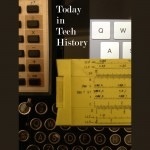
1989 – A solar flare created a geomagnetic storm that caused three hard drives to fail in an otherwise fault-tolerant system at the Toronto Stock Exchange. This prevented access to critical market data, leading the exchange to be shut down for three hours.
http://catless.ncl.ac.uk/Risks/9.15.html
1993 – Ian Murdock announced the Debian Linux distribution system. The name combined his then girlfriend Debra’s name with his own, Deb-Ian. And now you know how to properly pronounce it.
http://www.debian.org/doc/manuals/project-history/ch-intro.en.html
1994 – The IBM Simon went on sale, combining a mobile phone with computer functions. It weighed 500 grams, could run apps and be linked to a fax machine, selling for $899. The word smartphone hadn’t even been coined yet.
http://www.bbc.com/news/technology-28802053
1995 – The first version Microsoft’s Web browser, Internet Explorer 1, debuted. It was based on Mosaic, which Microsoft had licensed from Spyglass Inc.
http://gizmodo.com/5614186/internet-explorer-turns-15-today
2011 – Xiaomi launched its first phone, the M1 or ‘Xiaomi Phone’ with a 1.5 GHz dual core chip and 1 GB of RAM for ¥1,999.
http://www.engadget.com/2011/08/16/xiaomi-m1-with-miui-os-a-310-phone-with-1-5ghz-dual-core-soc-a/
Read Tom’s science fiction and other fiction books at Merritt’s Books site.
